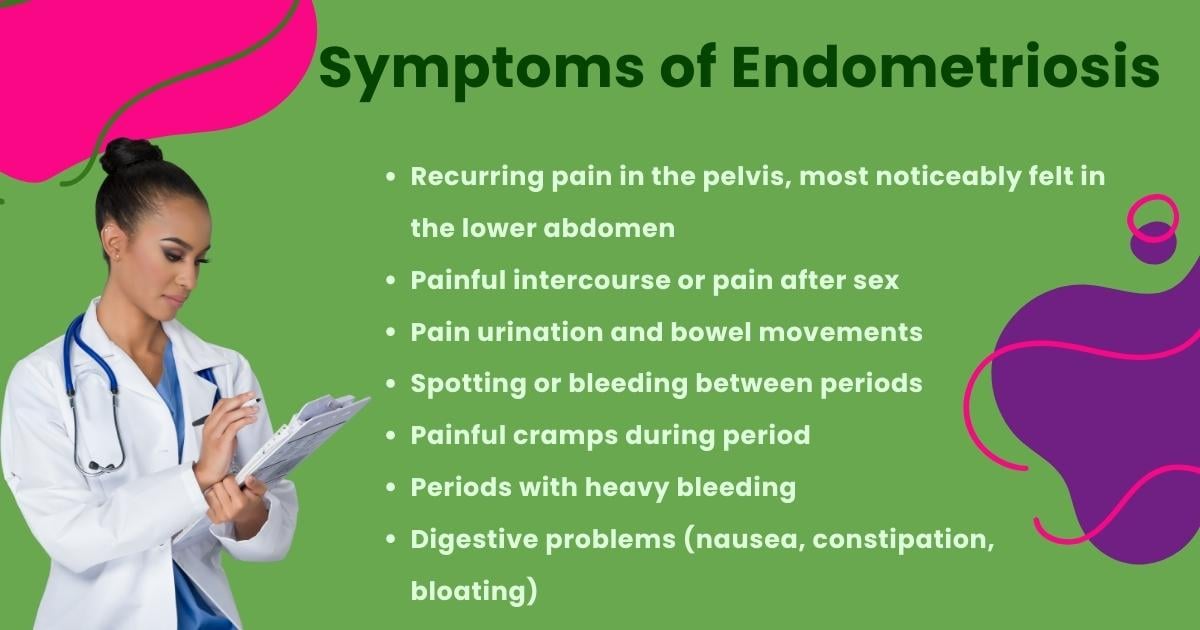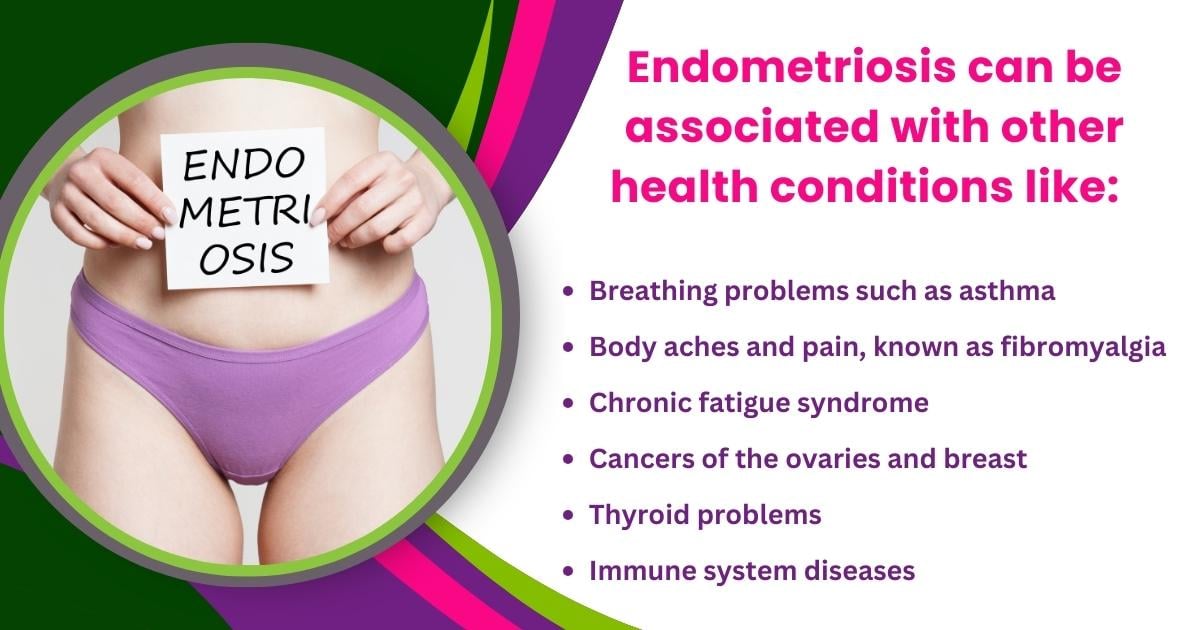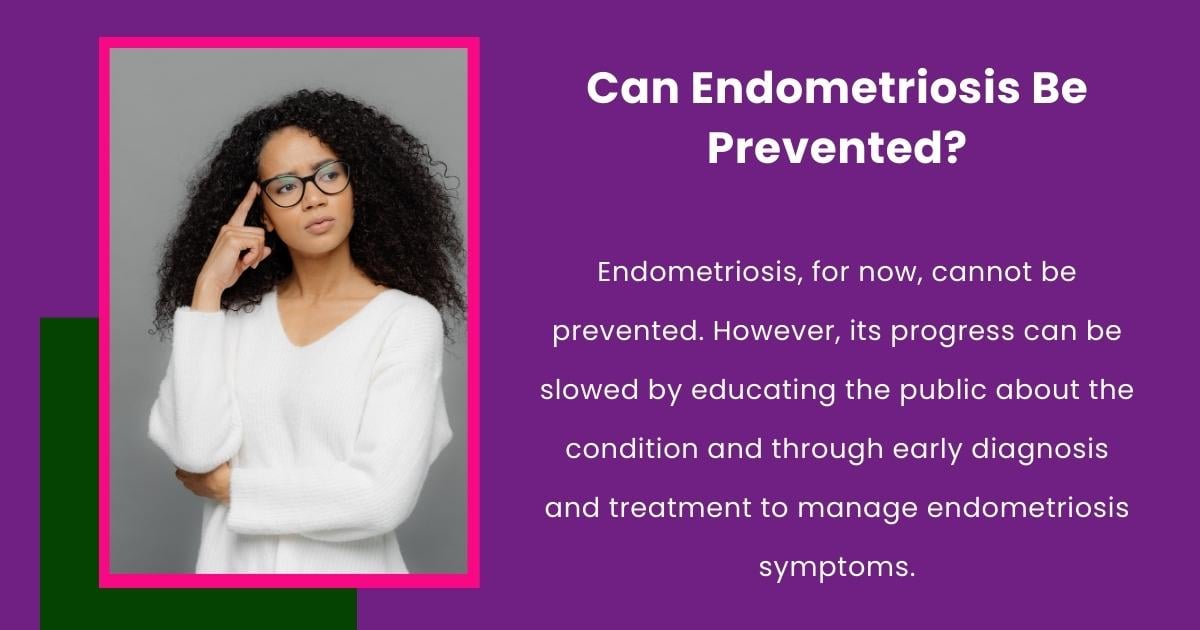Endometriosis affects almost 200 million girls and women of reproductive age worldwide. It is a chronic condition that can reduce the quality of life and cause severe and painful menstrual cycles, heavy bleeding, fatigue, painful intercourse, and pelvic pain.[1]
Pain during urination and bowel movements have also been reported, along with nausea, infertility, and mental health disorders like depression. There is no cure for endometriosis.[1]

What is Endometriosis?
Endometriosis is a persistent condition that occurs when there is a growth of uterine tissue that spreads outside of a woman’s uterus. This can cause swelling and scar tissue to develop in the pelvis. Endometrial tissue can spread to the bowel, rectum, and bowel, along with the cervix, vagina, and vulva.[2]
Although rare, the scar tissue can sometimes spread and affect other areas of the body, such as the brain, lungs, and skin. Women with endometriosis might suffer extreme pain before and after their menstrual cycle and infertility.[2]
This condition can start as early as your first period and can continue until menopause, but it is more commonly seen in women between 30 and 40 years old.[2]
What are the Symptoms to Be Aware of?
One of the most common symptoms of endometriosis is pain in the pelvis region. Some women with endometriosis do not experience symptoms, and women with symptoms may not be familiar with the condition.[1]

Although the symptoms of endometriosis can get better after menopause, for some women, symptoms may continue.
What is the Cause of Endometriosis?
The specific cause of endometriosis remains unknown. However, it is believed to be caused by genetics, hormones, a compromised immune system, and a backward flow of blood with endometrial tissue back into the body during the menstrual cycle.[2]
Surgery can be another factor that can cause endometriosis. During hysterectomies and c-sections, the endometrial tissue can be unintentionally carried and spread from the incision site to another area within the abdomen.[2]
What are the Impacts?
The impact of endometriosis can be pretty significant. Those with endometriosis might experience a reduction in quality of life by not being able to continue with daily tasks and responsibilities such as going to work or school and might avoid sexual intimacy because of pain, which can put a strain on social and romantic relationships.[1]
Being unable to go about daily life, as usual, can also create anxiety and depression in those with endometriosis.[1]

Is Endometriosis Linked to Other Conditions?

How is Endometriosis Diagnosed?
Often, symptoms of endometriosis can be similar to other conditions, which may delay diagnosis. A physician who suspects a patient of having endometriosis will begin documenting the patient’s period symptoms, which can include a pelvic exam.[1]
An ultrasound, MRI, or surgery might be required to examine the pelvis and reproductive organs to further diagnose endometriosis.[2]
Can Endometriosis Be Treated?
Although there is no cure, endometriosis can be managed by:[1]
- Painkillers to reduce pain and inflammation (Ibuprofen)
- Various hormonal birth control methods
- Surgery to remove endometriosis scar tissue or lesions

An Anti-Inflammatory Diet for Endometriosis
Endometriosis can cause inflammation in the body by sticking to other organs and trapping blood from the endometrial cells that have been misplaced, leaving no place to exit the body.[3]
An anti-inflammatory diet can aid in alleviating some of the symptoms and bring balance back to the body, especially the balance of the hormone estrogen.[3]
An excess of estrogen can worsen pain and cramps. Foods high in fiber eliminate extra
estrogen in the stool and can help ease endometriosis inflammation.[3]
To increase fiber intake, consume foods like:
- Beans and peas
- Fruits and vegetables
- Whole grains and flaxseeds
Healthy fats, which include monounsaturated and Omega-3 fats, can reduce symptoms of inflammation. They include:
- Fish high in fat, such as salmon, tuna, and sardines
- Avocadoes
- Peanut butter
- Nuts and seeds
- Olive oil, safflower oil, and plant oils
It’s also essential to have magnesium and zinc in your diet. It can help relax muscles and ease cramping. Food with magnesium include:
- Leafy green vegetables
- Beans
- Nuts and seeds
- Dark chocolate
Zinc can help with hormone regulation and can regulate your period. Sources of zinc include:
- Zinc supplements (for those who are vegan or vegetarian)
- Shellfish
- Poultry
- Red meat
Foods that can aggravate endometriosis inflammation and increase pain should be limited. They include:
- Processed foods
- Caffeine
- Drink high in sugar
- Alcohol
- Meats high in saturated fats

Choosing a healthy plant-based and vegan diet is most beneficial when it comes to:
-
Higher levels of energy;
-
Improved sleep;
-
 Aids in energy and overall happiness;
Aids in energy and overall happiness; -
Provides a sense of comfort and relief;
-
Could prevent major diseases such as obesity and diabetes;
-
Accomplish weight-loss and management; and
-
Improves mental and cognitive functioning.
There are really no excuses not to try healthier habits in your everyday life. If you are a man or woman looking for specific benefits of adopting healthier habits or just want to know about the general healing properties of herbs. Please remember to comment or post any health questions, or contact us directly!

















